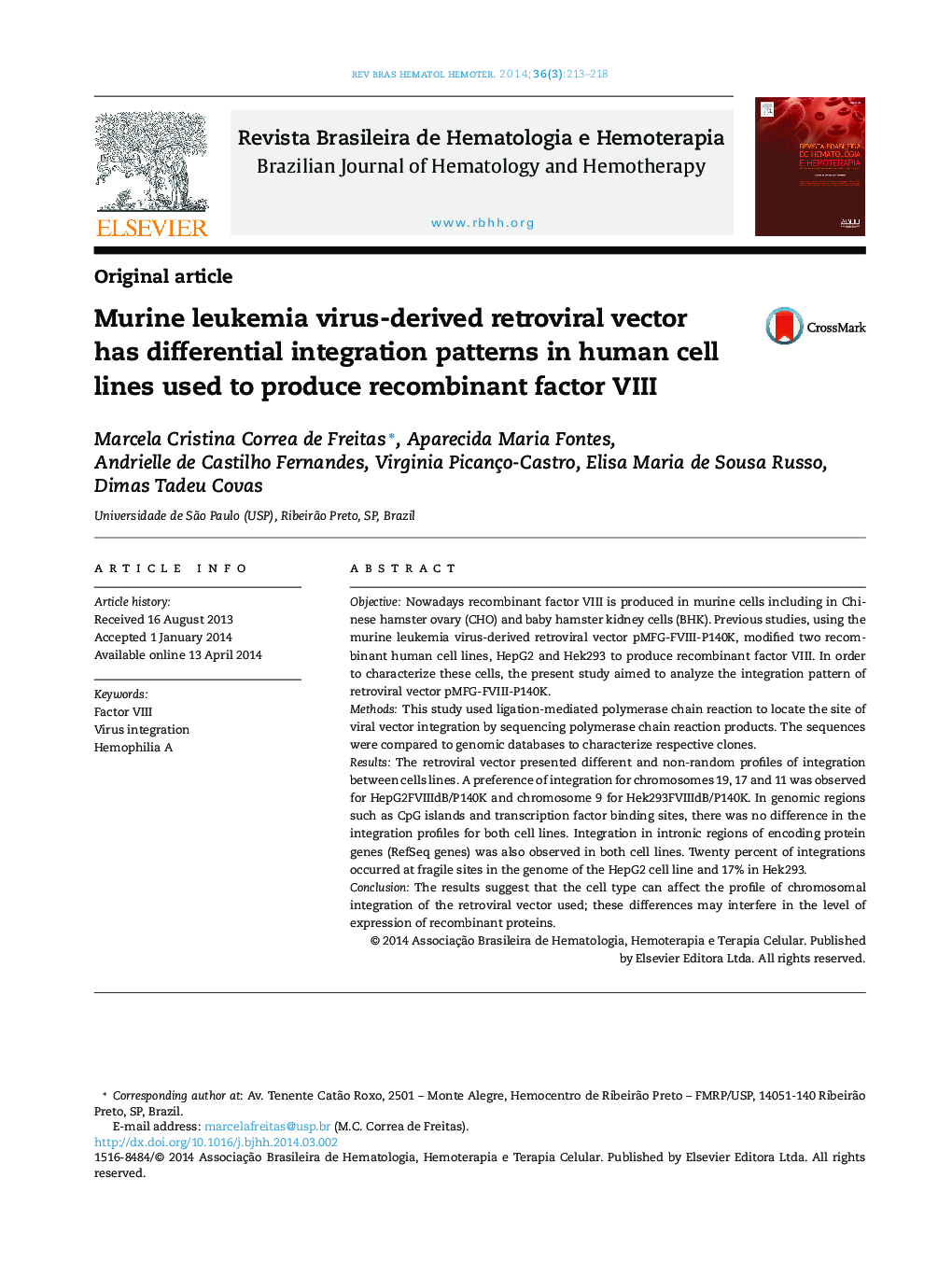| Article ID | Journal | Published Year | Pages | File Type |
|---|---|---|---|---|
| 3333035 | Revista Brasileira de Hematologia e Hemoterapia | 2014 | 6 Pages |
ObjectiveNowadays recombinant factor VIII is produced in murine cells including in Chinese hamster ovary (CHO) and baby hamster kidney cells (BHK). Previous studies, using the murine leukemia virus-derived retroviral vector pMFG-FVIII-P140K, modified two recombinant human cell lines, HepG2 and Hek293 to produce recombinant factor VIII. In order to characterize these cells, the present study aimed to analyze the integration pattern of retroviral vector pMFG-FVIII-P140K.MethodsThis study used ligation-mediated polymerase chain reaction to locate the site of viral vector integration by sequencing polymerase chain reaction products. The sequences were compared to genomic databases to characterize respective clones.ResultsThe retroviral vector presented different and non-random profiles of integration between cells lines. A preference of integration for chromosomes 19, 17 and 11 was observed for HepG2FVIIIdB/P140K and chromosome 9 for Hek293FVIIIdB/P140K. In genomic regions such as CpG islands and transcription factor binding sites, there was no difference in the integration profiles for both cell lines. Integration in intronic regions of encoding protein genes (RefSeq genes) was also observed in both cell lines. Twenty percent of integrations occurred at fragile sites in the genome of the HepG2 cell line and 17% in Hek293.ConclusionThe results suggest that the cell type can affect the profile of chromosomal integration of the retroviral vector used; these differences may interfere in the level of expression of recombinant proteins.
